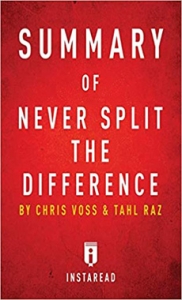Going for the No in Blogging for Business
There are three kinds of yeses, Chris Voss teaches negotiators in the book Never Split the Difference. There’s commitment, confirmation, and counterfeit. People are most used to giving the counterfeit “yes” because they’ve been trapped by the confirmation “yes” so many times. The way to clinch a deal, Voss, believes, is by understanding the different meanings of “no”.
Negotiation, Voss teaches, means making it about other people, validating their emotions, and creating enough trust for a real conversation to begin. He reminds readers that “No” can have different meanings, including:
- I am not yet ready to agree.
- I do not understand.
- I don’t think I can afford it.
- I want something else.
- I need more information.
- I want to talk it over with someone else.Can the insights offered by Chris Voss be of use in content marketing through blogs? Definitely. In a guest post for my Say It For You blog, Karen Sullivan compared shopping to education. That’s particularly true when a buyer is searching for professional services, and wants to “interview” different providers, she explained. Sullivan asks buyers to respect the sales process; it’s dishonest to come to the sales process to get free consultative services.
Since blogging is part of “pull marketing”, the “negotiation” process is based on the “seller’s” skill in providing valuable, usable information, in essence anticipating all the possible “no” reactions, allowing readers to arrive at a “yes” in their own way and in their own time frame.
A second factor to consider is that blogging for business is an ongoing process, rather than a one-time event. With a blog, you can offer different kinds of information in different blog posts. If readers “are not yet ready to agree”, or need more information, you can convey the idea that there are different levels of involvement possible. They may share the blog post, subscribe to the blog, request a list or informational piece. You’re welcoming them to your website, yet ultimate decisions need not be made just yet. Make sure to provide plenty of valuable information for them to mull over, and perhaps “talk it over with someone else”.
To get to the “yes”, go for the “no” in blogging for business!






Follow us online!